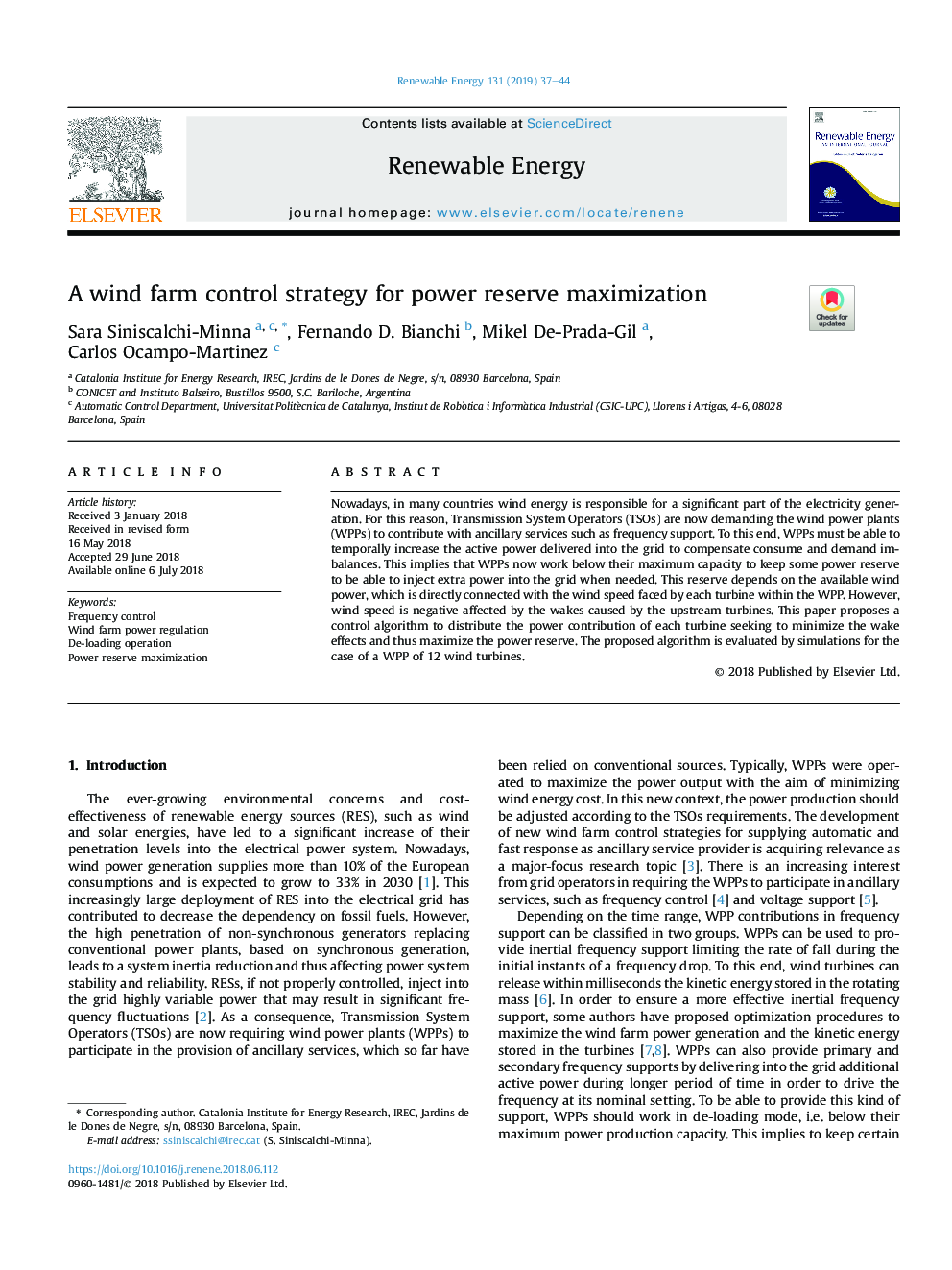| Article ID | Journal | Published Year | Pages | File Type |
|---|---|---|---|---|
| 6763599 | Renewable Energy | 2019 | 8 Pages |
Abstract
Nowadays, in many countries wind energy is responsible for a significant part of the electricity generation. For this reason, Transmission System Operators (TSOs) are now demanding the wind power plants (WPPs) to contribute with ancillary services such as frequency support. To this end, WPPs must be able to temporally increase the active power delivered into the grid to compensate consume and demand imbalances. This implies that WPPs now work below their maximum capacity to keep some power reserve to be able to inject extra power into the grid when needed. This reserve depends on the available wind power, which is directly connected with the wind speed faced by each turbine within the WPP. However, wind speed is negative affected by the wakes caused by the upstream turbines. This paper proposes a control algorithm to distribute the power contribution of each turbine seeking to minimize the wake effects and thus maximize the power reserve. The proposed algorithm is evaluated by simulations for the case of a WPP of 12 wind turbines.
Keywords
Related Topics
Physical Sciences and Engineering
Energy
Renewable Energy, Sustainability and the Environment
Authors
Sara Siniscalchi-Minna, Fernando D. Bianchi, Mikel De-Prada-Gil, Carlos Ocampo-Martinez,
